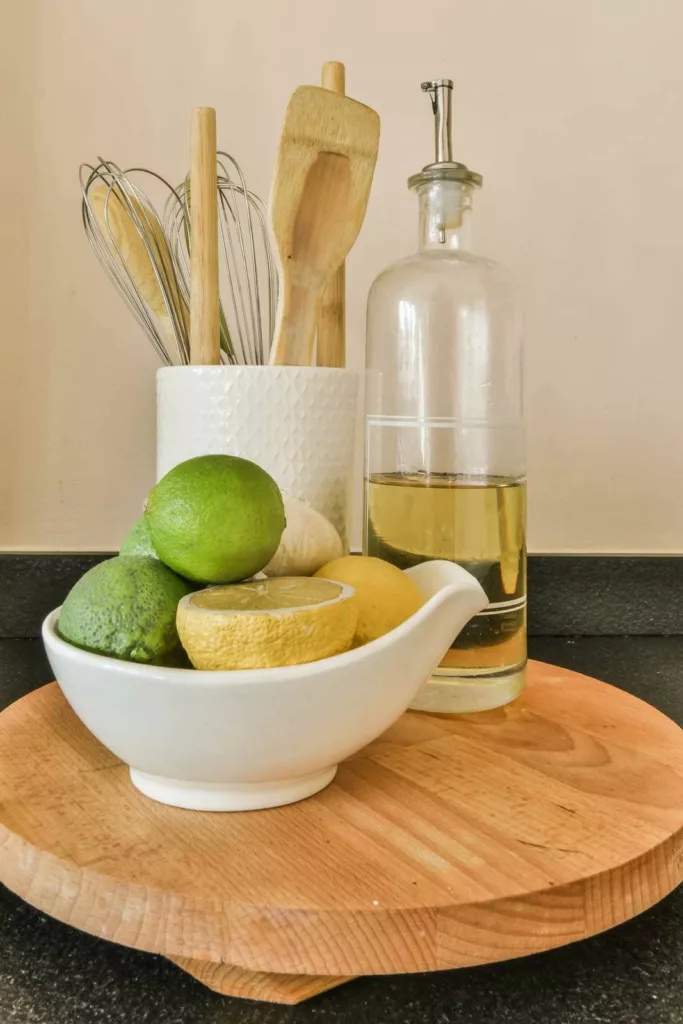How to fix a warped cutting board? Warped chopping boards are often caused by improper care, excess heat, moisture, wear and tear.
To know how to fix a warped cutting board, understanding the underlying cause is vital.
This helps us to pick the proper fixing technique and prevent future occurrences.
Warping in cutting boards is an avoidable situation. But in a case where it has already happened, it is not irreversible.
Several techniques can help to bring a warped cutting board back into shape.
This guide explores everything you need to know about fixing a warped board and getting it back in good shape.

Hands cutting sausage on a wooden board
What Can I Do To Prevent My Cutting Board From Warping?
Cutting board warps for several reasons. First, wood is organic and subject to changes due to natural factors like humidity, moisture, heat, or direct sunlight.
Your cutting block could act like a sponge because the porous wood fibers absorb moisture in the air. This leads to changes in shape and structure.
Poor maintenance, poor handling, uneven drying, and using untreated boards cause wood warping.
You can reverse most warping without stress except in extreme scenarios requiring woodwork skills.
However, it is better to completely prevent warping from occurring.
Outlined below are four easy ways to prevent your cutting board from warping.
- Wood is organic and porous. Avoid submerging in water, running under a tap, or leaving on a wet surface to prevent warping.
- Clean your block after every use. It is essential to air dry your cutting block after cleaning. A plate rack or stand can prove resourceful for air drying. Always ensure you dry your board correctly after use. It is also advisable to have it appropriately stored after drying.
- Keep your board treated, seasoned, and oiled. While many chopping block treatment products are available, natural food-grade mineral oils and beeswax will protect your board better. They help slow down the absorption process of the board.
Treating your board also prevents unwanted odours by creating a protective layer over the surface, preventing food juices from seeping into the wood.
Avoid high-fat oils; they turn rancid and damage your board.
When it comes to oiling, you cannot overdo it. Let the oil soak in for at least 15 minutes, then wipe off excesses. Do this as often as you use your board.
- Avoid placing heavy-duty equipment on your board. This includes taking hot pots and pans off the stove and placing them atop a cutting board.

Washing a wooden cutting board
How To Fix A Warped Wood Cutting Board
There are many ways to fix a warped wood cutting board. Combining pressure, heat, and moisture is one of the best ways. Let’s discuss some of the ways to remedy a warped board.
How to fix a warped cutting board? Ironing method:
Depending on the thickness of your board, ironing can be the easiest and most effective way to fix a warped board. Using a household iron could also work depending on the extent of the warp.
It uses the principle of increasing the malleability of the wood fibers through heat and little moisture to revert the board to its original shape.
How to fix a warped cutting board? Steam method:
You can straighten your board by steaming your wooden block. This method uses heat and moisture to make the wood fibers pliable.
Wood fibers expand on moisture exposure and contract when dried out, likely returning to their original shape and size.
If the board doesn’t return to its standard shape, you can apply pressure until it does.
However, this method can cause cracking if not supervised carefully.
How to fix a warped cutting board? Grass and sun method:
This method is straightforward but might take some time to effect change. Position your butcher’s board outdoors in wet foliage and direct sunlight.
The expansion and contraction of wood will cause it to straighten or even out.
Flip it:
Most warping occurs because of unbalanced moisture distribution in the board.
Warping occurs when only one surface is bare, and work is done to even out the exposure on the bottom surface.
All you have to do is flip the board so the bottom surface can get equal exposure to gravity and air.
The method will take some time, but the block will eventually even. Once the warp has been evened out, flip the board daily or whenever you use it.
Moisture/ Pressure method:
We do not mean excess pressure when discussing pressure or humidity. You can place heavy items on the board, such as a stack of pots or dumbbells.
You must evenly distribute the load on the board so the pressure will flatten it or restore the wood fiber’s size and shape.

Potatoes in a pot on a cutting board
Woodworking:
You can only correct severe warping by employing a skilled woodworker. Your board will be sanded or filed out to restore its original shape.

A bowl of fruits and a bottle of oil on a wooden board
Conclusion
You can be gentle and rough with a cutting board if it is produced with prime materials.
A well-treated board is water-resistant and less prone to warping if properly maintained.
A warped cutting block is not permanently damaged, and its condition is reversible.
The best fix for a warped chopping board is good handling of your board. All the methods mentioned above give the desired results.
If your board gets warped, follow the insights in this guide, and you can make it as good as new.
